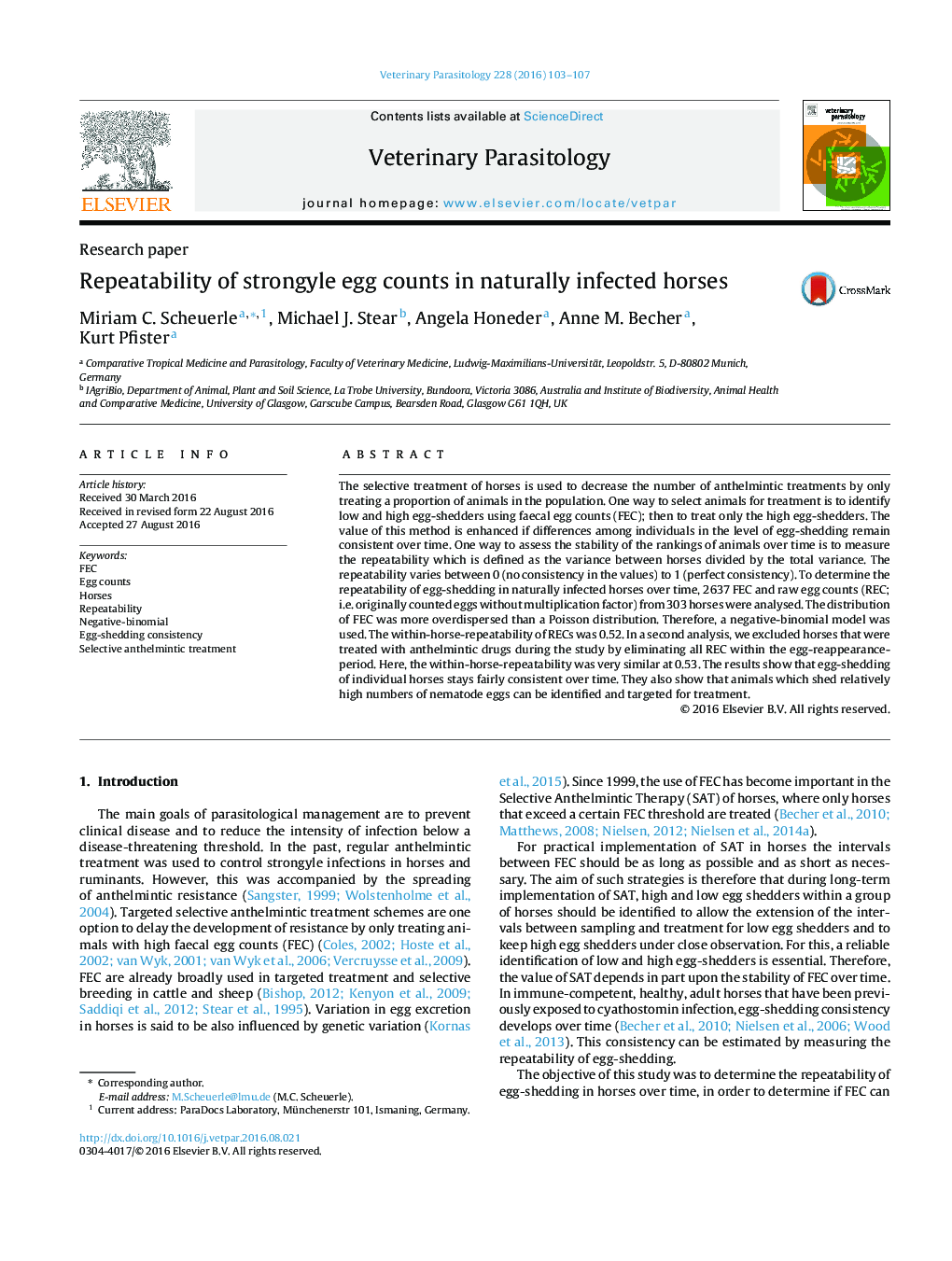| Article ID | Journal | Published Year | Pages | File Type |
|---|---|---|---|---|
| 5801952 | Veterinary Parasitology | 2016 | 5 Pages |
â¢Strongyle egg counts in individual horses are repeatable over time.â¢Differences among horses make up about half the variation in strongyle egg counts.â¢Animals shedding relatively high numbers of nematode eggs can be identified.
The selective treatment of horses is used to decrease the number of anthelmintic treatments by only treating a proportion of animals in the population. One way to select animals for treatment is to identify low and high egg-shedders using faecal egg counts (FEC); then to treat only the high egg-shedders. The value of this method is enhanced if differences among individuals in the level of egg-shedding remain consistent over time. One way to assess the stability of the rankings of animals over time is to measure the repeatability which is defined as the variance between horses divided by the total variance. The repeatability varies between 0 (no consistency in the values) to 1 (perfect consistency). To determine the repeatability of egg-shedding in naturally infected horses over time, 2637 FEC and raw egg counts (REC; i.e. originally counted eggs without multiplication factor) from 303 horses were analysed. The distribution of FEC was more overdispersed than a Poisson distribution. Therefore, a negative-binomial model was used. The within-horse-repeatability of RECs was 0.52. In a second analysis, we excluded horses that were treated with anthelmintic drugs during the study by eliminating all REC within the egg-reappearance-period. Here, the within-horse-repeatability was very similar at 0.53. The results show that egg-shedding of individual horses stays fairly consistent over time. They also show that animals which shed relatively high numbers of nematode eggs can be identified and targeted for treatment.
